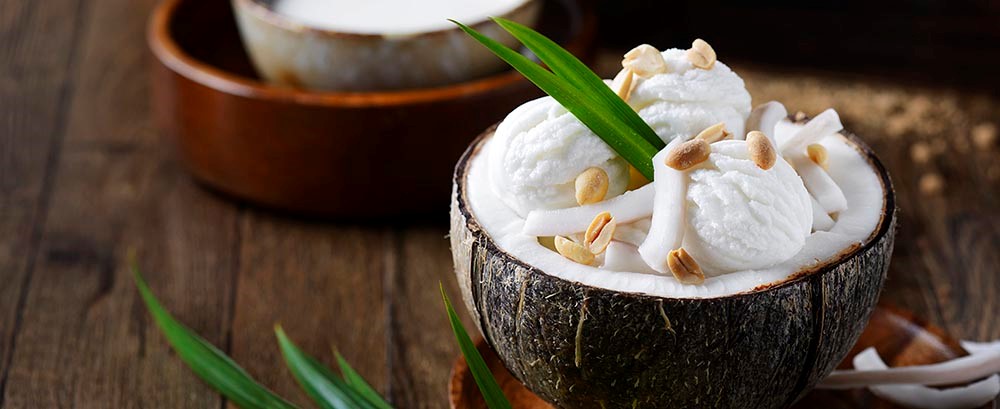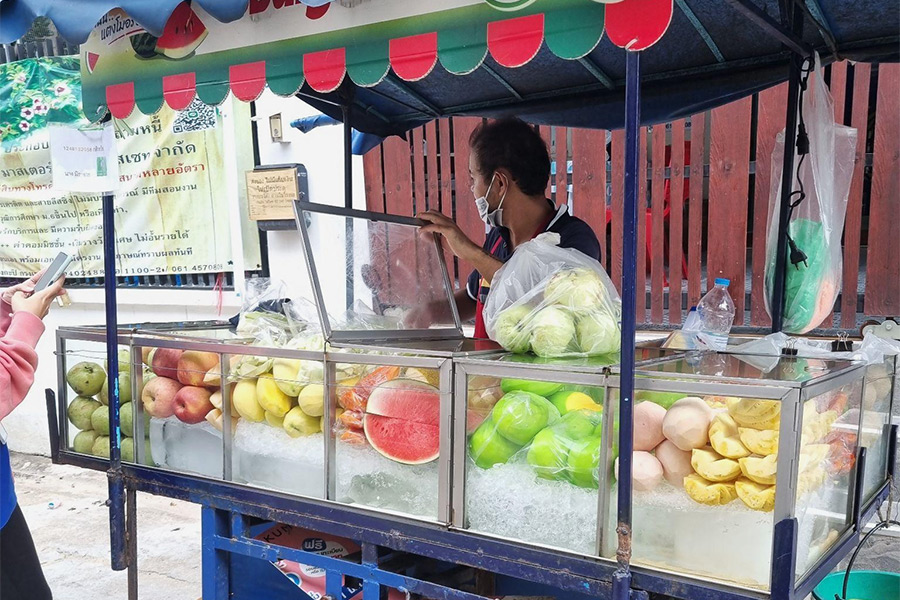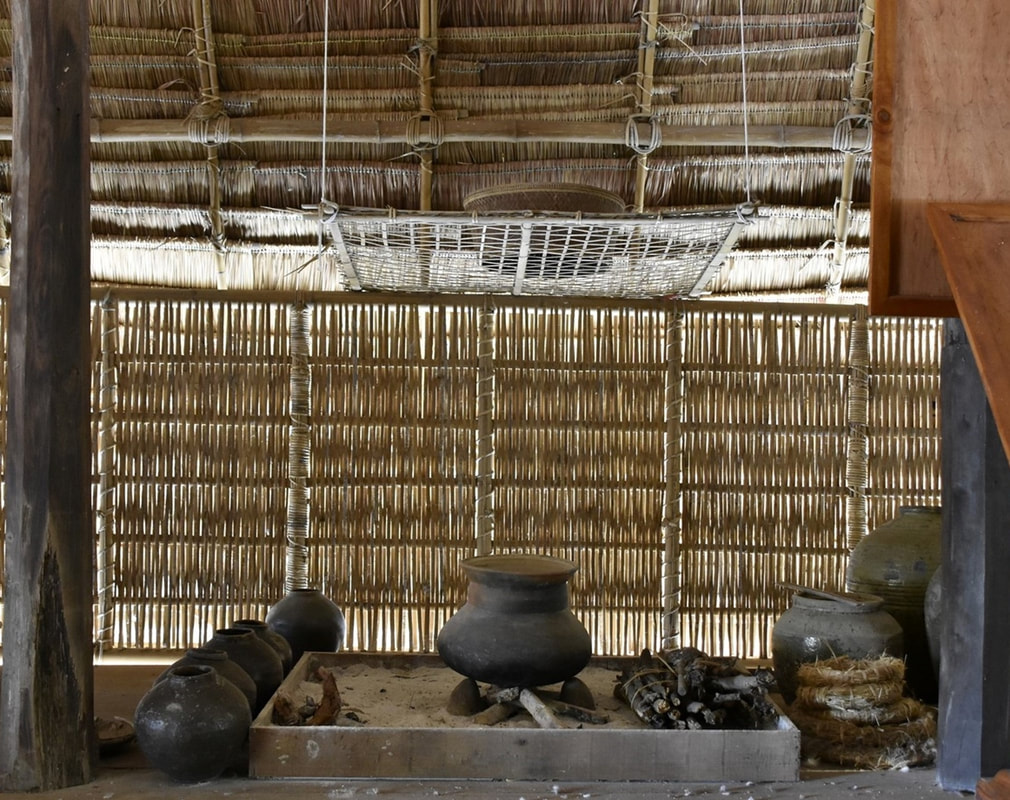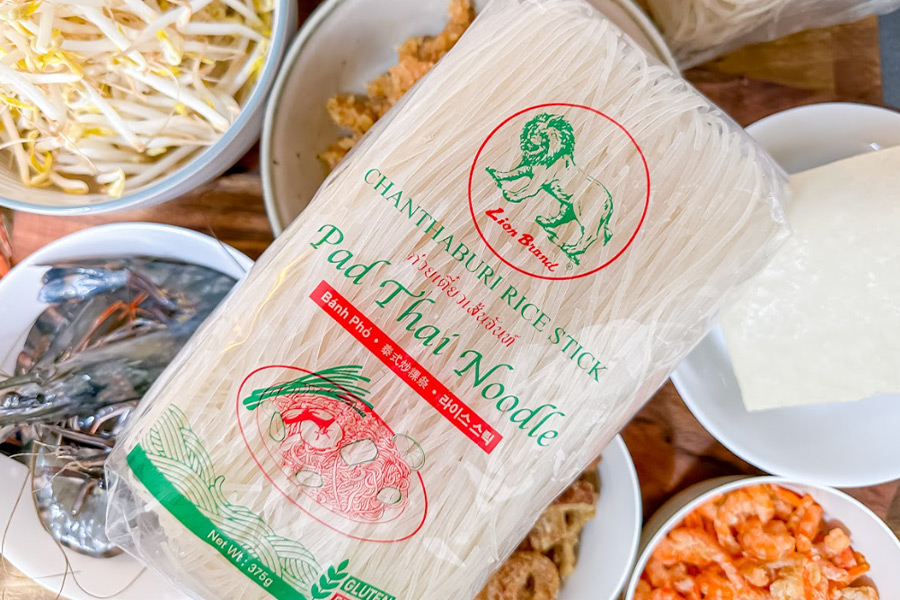
Just as Bega is known for cheese, there’s a province in Thailand that is well known for their noodles – ‘Sen Chan’ (เส้นจันท์) or Chanthaburi Rice Sticks. Sen directly translates to noodle and Chan is an abbreviation of the province Chanthaburi. These noodles are unique to the area and are one of the most popular souvenirs people buy back for their friends and families when visiting. I have also seen many Pad Thai restaurants proudly including ‘Sen Chan’ in their names to draw in customers, advertising the fact that they have these special noodles. But what makes them so unique?
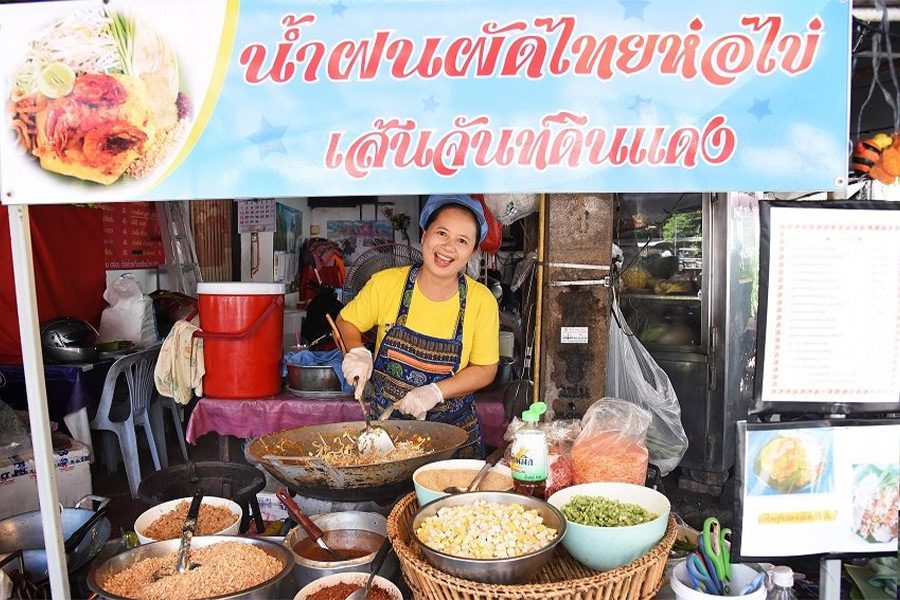
Pad Thai shop with ‘Sen Chan’ (เส้นจันท์) in their name (Image source | Sentang Sedtee)
Unlike other rice noodles, Chanthaburi Rice Sticks have a chewier and bouncier texture that gives a bit of resistance when chewing. The noodles also hold their shape well instead of mushing together and breaking apart making it easier to thoroughly mix in sauces and seasoning when stir frying. Apart from Pad Thai they are also great in noodle soups! For a simple and delicious Pad Thai recipe using Sen Chan, visit one of our previous blogs – Pad Thai Recipe (Feat. Lion Brand Chanthaburi Rice Stick).
As a province Chanthaburi is adjacent to the sea and borders Cambodia on the eastern part of Thailand – rich in culture, seafood and tropical fruits. It is believed that Chinese settlement in the area brought along noodle making knowledge with only one family making Sen Chan in the beginning. Like the mystery surrounding what herbs and spices are used in a particular fried chicken, it is said that the exact ratios for making these bouncy noodles is still one of Chanthaburi’s best kept secrets. These secrets are passed down from generation to generation and although each manufacturer has their own recipes, they are all made from rice flour.
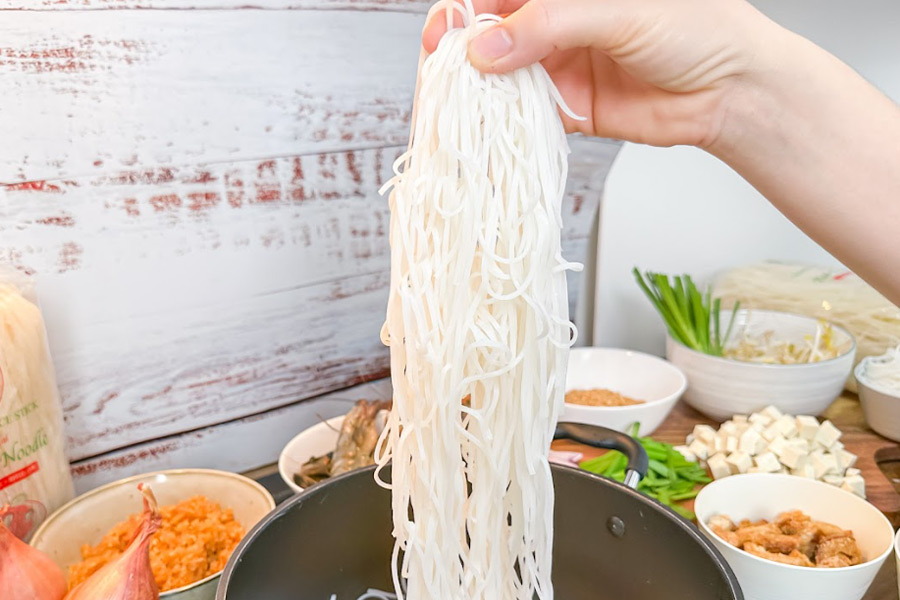
Chanthaburi Rice Stick after being soaked, realty for stir-frying!
Rice flour and water, the main ingredients of Sen Chan. This may seem very simple but makers of these noodles are quite particular with where their rice comes from. One of the manufacturers would only use rice grown from the neighbouring provinces of Pichit and Chachoengsao, apparently rice grown in more sandy soil is harder which helps with the chewy texture! To make the perfect rice flour, low moisture ‘sa hoh’ rice (broken rice that is ½ of a normal rice grain) is washed more than once and soaked for a few hours before being sent to the mill to be turned into rice flour. At this point some noodle makers also mix in flour made from roots of local plants to help create the desired texture, while others pride themselves in using 100% rice flour.
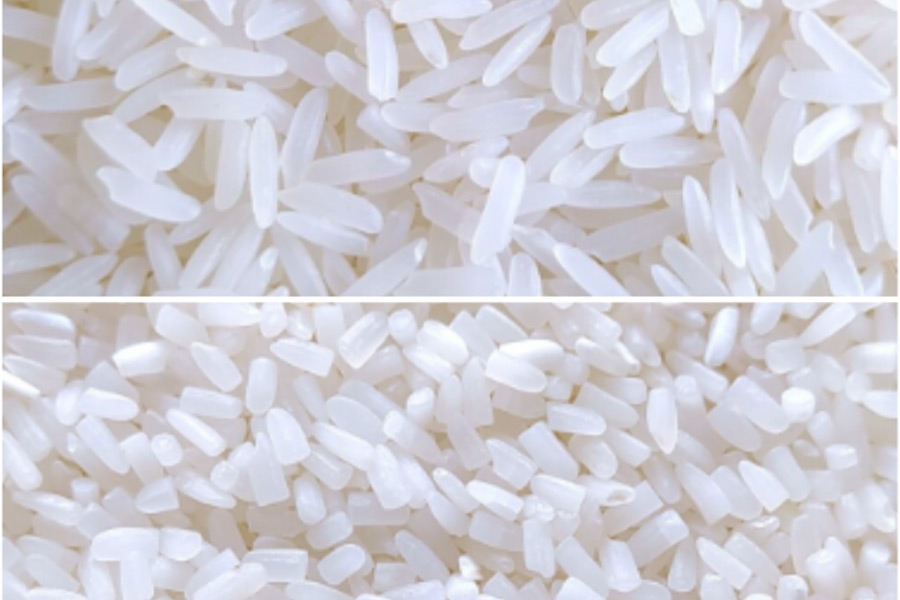
Normal rice grain at the top compared to ‘sa hoh’ rice grain (bottom)
The dry ingredients are then mixed with water and poured into large sheets for steaming. Traditionally ground water from the province is used in this process and it may have played a role in making Sen Chan what it is. Once cooked, the sheets of rice noodles are then rested on bamboo sieves to naturally dry in the sun. Before it’s fully dried, the sheets are sliced into thin noodles then left out to fully dry before packaging. Although the modern day process is probably much more efficient, the secret recipes would have remained the same after multiple generations.
Due to the unique properties of the Chanthaburi Rice Sticks, it is very easy to cook with these noodles even if you’ve never made dishes like Pad Thai before. All you need to do is pre-soak the noodles in warm water for 5-8 minutes and they’re ready to be mixed up in delicious sauces. If you’re like me and have accidentally turned many stir-fried noodle dishes into a soggy mess with an impossible to clean pan, give Sen Chan a go!
Article by Oun V.
References
Bangkok Post
Chanthaburi Travel


